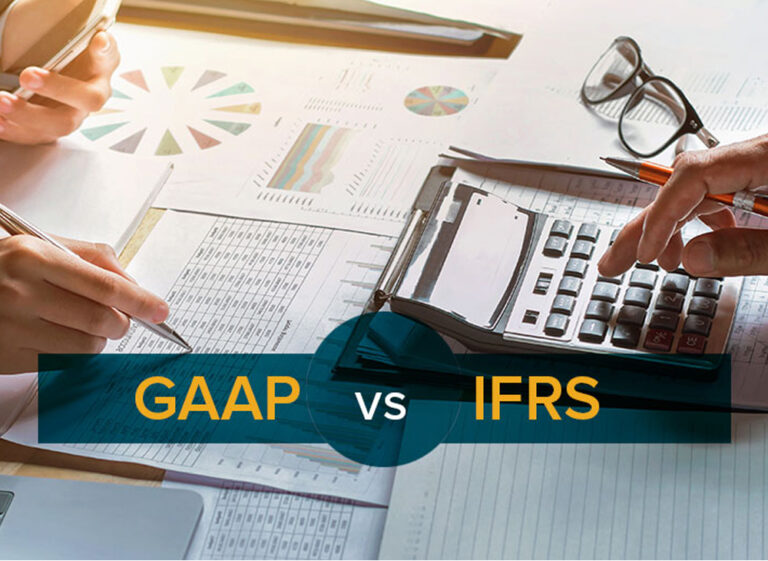Understanding Financial Statements
A financial statement offer a detailed look at the financial transactions, performance, and status of a business. which help stakeholders see how well the company is doing. Financial reports are generally prepared quarterly or annually and serve both internal management and external parties like investors and regulators.
Main ingredients of financial statements that provide insights into a company’s operations are as follows.
Profit & Loss Statement
This is a fundamental financial statement providing an in-depth, period-to-period account of a company’s financial performance. The P&L statement records all of a company’s revenues generated from primary operations, for example, sales of products or services and distinguishes them from non-operating revenues, such as interests or rents. The statement also lists operating expenses like the cost of goods sold (COGS), salaries, rental payment utilities, and repairs, and non-operating expenses such as interest payments.
Furthermore, the income statement mentions the gains and losses from non-recurring events, such as the sale of an asset or lawsuit settlement. It subtracts total expenses and losses from total revenues and gains to derive the net income, which indicates the company’s profit for that period. The net income also provides insights into the operational effectiveness of the company.
Components of the Income Statement
- Revenue (Sales):
- Operating Revenue:Income generated from the company’s principal activities, such as the sale of goods or services.
- Non-Operating Revenue:Income from non-core activities, such as interest income, rental income, or royalties.
- Cost of Goods Sold (COGS):
- The cost of materials and direct labor incurred in the production of the goods or services sold.
- Gross Profit:
- This is Revenue – COGS, showing the profit that is generated by the core business operations before operating expenses are factored in.
- Operating Expenses:
- Selling, General, and Administrative Expenses (SG&A):Costs related to selling products/services or managing the business, such as wages, rent and utilities.
- Research and Development (R&D) Expenses:Expenditures on developing new products or services.
- Depreciation and Amortization:The systematic allocation of the cost of tangible and intangible assets over the period they are used.
- Operating Income (Operating Profit):
- It is calculated as Gross Profit – Operating Expenses. It reflects the earnings from routine business operations.
- Non-Operating Income and Expenses:
- Gains:Profits from non-core operations, like selling an asset for more than its book value.
- Losses:Costs or losses of value to non-core activities, for example, payouts in a lawsuit or a write-down on an asset.
- Interest Expense:Costs incurred from borrowing funds.
- Interest Income:Earnings from invested funds.
- Net Income:
- After all revenues, gains, expenses and losses have been taken into consideration, reports the final profit or loss.
The income statement could be presented in either a single-step or multi-step format, depending on regulatory requirements or stakeholder preference. The financial report can be used by investors, creditors and management, as it provides an analysis of the company’s financial status and operational efficiency. It also points out the under-performing areas of the company and helps management make strategic decisions in order to ensure future profitability.
Balance Sheet
The balance sheet is a key financial statement that summarizes the financial position of a company at a given point in time by reporting the assets, liabilities and shareholders’ equity of a company. The balance sheet is one of the major financial statements – in addition to the income statement and statement of cash flows – used to evaluate the liquidity and profitability of a business.
The balance sheet is organized with the below accounting equation:
Assets = Liabilities+Shareholders’ Equity
The balance is preserved by this equation, which reflects the principle that all assets are financed through either debt (liabilities) or investment from owners (equity).
Components of the Balance Sheet
- Assets:These are economic resources controlled by the company. They are typically categorized into:
- Current Assets:Items expected to be converted into cash or used up in the coming year, including cash, accounts receivable, and inventory.
- Fixed Assets:Assets that are long-term resources used in operations, such as land, buildings, machinery and equipment.
- Liabilities:These are the payments a company owes its creditors. They are divided into:
- Current Liabilities:Debts owed within the next 12 months, including accounts payable and short-term loans.
- Long-Term Liabilities:Obligations due after one year, such as mortgages and long-term loans.
- Shareholders’ Equity: This section encompasses the interest of owners after liabilities are subtracted from assets; it includes common stock, preferred stock, paid-in capital and retained earnings (accumulated revenues not distributed as dividends).
The balance sheet is essential to the interests of the company’s investors creditors, and management. They use it to understand a company’s liquidity, financial flexibility and capital structure, and to help them decide whether or not to invest, loan funds, or make other strategic decisions for business operations.
Cash Flow Statement
A cash flow statement (CFS) describes a company’s cash movements – where the company derives its cash and how it spends it. The CFS supplements the balance sheet and the income statement and helps the investors assess the overall financial health of the company.
The CFS is divided into three sections:
- Operating Activities: This section describes cash flow from core business operations – sales, wages, taxes, accounts receivable, depreciation and amortization, inventory and accounts payable are all included here.
- Investing Activities: It reflects cash used for loans, mergers and acquisitions, acquiring more property, plant and equipment.
- Financing Activities: It includes cash flows related to borrowing or equity, for example, debt or equity issuance, stock repurchases, dividends, debt repayments and loans.
Collectively, these sections reconcile the income statement and the balance sheet, showing the overall cash position of the company.
Decision Making for Management
Financial statements can offer details on how the company is performing. The income statement and cash flow statement present the profitability of the company, whereas the balance sheet shows the liquidity and solvency details. Using these statements, management can decide on future investments, cost-cutting and operational enhancements as they will have an idea about the present state of the business.
Investor Confidence
Financial statements help investors assess the soundness of a company. They can answer questions such as – how prudently the company is being run, how strongly it is positioned to survive and if it is capable of growth. It can help investors decide whether to buy, hold, or sell, and if so, how much. A company with good, clean financials inspires greater confidence and trust, making it easier to raise money from investors, banks and private equity.
Regulatory Compliance
Companies in almost every country are compelled by law to prepare and file periodic financial statements, which must conform with accounting standards prescribed by the financial authorities. This leads to the creation of financial statements that are intended to provide a true and fair view of a company’s financial position. It further helps maintain integrity in the financial markets and legally protect stakeholders.
Creditworthiness for Lenders
When a company applies for a loan or other credit facilities from banks or financial institutions, they examine the financial statements of that company before approving or rejecting the request. Well-prepared financial statements help lenders to gauge a company’s ability to repay its loans, efficiently and effectively manage its assets, and maintain sufficient cash to stay in business. Based on this data, they will determine the level of risk involved and lending terms.
Benchmarking and Performance Evaluation
Financial statements allow businesses to measure their results against industry benchmarks, peers and competitors. By focusing on financial ratios and comparing them with other companies in the same industry, can help businesses find their strengths and weaknesses, and look for possibilities to develop themselves. Periodically reviewing performance allows businesses to be more deliberate and strategic in their decision-making.
Tax Planning and Compliance
Financial statements are helpful for tax planning – that is, they help a business to understand what its tax liability will be and how to minimize its tax bill. When presented with an accurate picture of revenue and expense levels, the financial statements assist a business in preparing for tax filing, as well as ensuring it meets the jurisdiction’s tax framework.
Benefits, Scope and Objectives of Financial Statements
Financial statements provide a simple, structured and consolidated view of a company’s financial position. Their applications are not only limited to the internal decision-making of a business but also extend to other stakeholders, customers and external parties such as investors, lenders and regulators.
Scope of Financial Statements
The scope of financial statements extends to internal teams and external parties such as investors. Let’s look at some areas where financial statements play a vital role.
Internal Business Management
Internal teams can use income and cash flow statements to understand if the current operations are effective or if they need to be improved. Financial statements can also aid in budgeting, forecasting and defining objectives that align with the company’s vision.
Analysis by External Parties
To investors, the scope of financial statements includes judging a company’s growth prospects, profitability and financial strength. These reports help them determine whether to purchase, retain or sell shares of the company in question.
Evaluation by Lenders
Banks and financial institutions rely on financial statements to assess a company’s creditworthiness before extending loans or credit facilities. A strong balance sheet and consistent cash flow indicate a company is financially stable and can manage its debt obligations.
Regulatory and Tax Compliance
Financial statements serve as a control mechanism, to ensure companies comply with legal obligations. In most jurisdictions, financial reports must follow accounting standards like Ind AS. Adherence to these regulations can help avoid expensive legal penalties.
Strategic Planning and Forecasting
By studying past financial data, businesses can predict future trends, anticipate expenses and to find out ways to overcome potential threats. The proactive approach can safeguard the business in the face of changing market conditions.
The scope of financial statements serves a wide array of needs – from internal management operations to financial assessments for investors and creditors. They are essential to business planning, regulatory compliance and sound financial health.




Eager to see how these changes will elevate performance standards and user satisfaction!
Comments are closed.